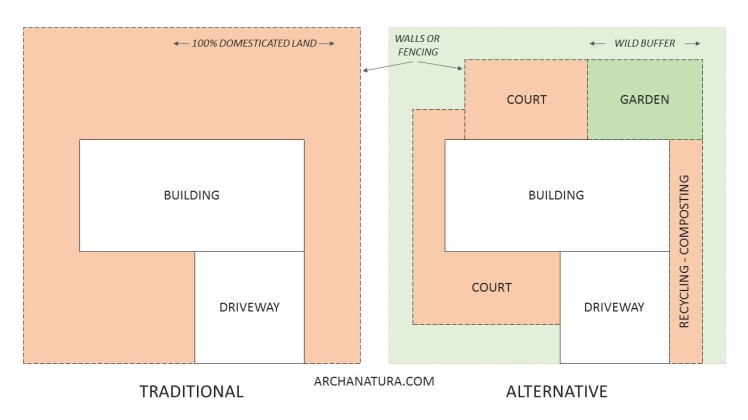Rethinking Walls & Fences
Follow us on Facebook and Twitter

Judging by building and architecture around the world, there seems to be a strong tendency in us to clearly delineate the places where we live, and to physically set them apart from those of others.
This delineation of our living spaces may be for security, to afford privacy and quiet, for exclusivity and status, or simply to follow local custom – custom often rooted in our agricultural past, but perhaps with older and more natural origins.
Though most take the practice for granted, it is distinctive and noteworthy. Imagine, for contrast, a system of architecture with minimal personal or family space and copious shared or community areas. Such systems exist, ultimately may be more beneficial for us, and have been proposed by modern architects (such as Le Corbusier). But they are not the norm, especially amid modern affluence and individualism.
Our enclosure or privatization of space of course begins with our residences themselves, and is often limited to our indoor residential space when we live at high densities. But in the lower densities of our suburbs and exurbs, this process nearly always extends outdoors to some degree, and quite frequently all the way to the edges of the property we own or use.
In practice, land enclosure at our personal or family property boundaries commonly takes the form of perimeter walls, fences, and other barriers, which visibly demarcate, and practicably domesticate, all of the land we own or occupy. This traditional mode of dividing and demarcating private space maximizes the area we have available for our exclusive use, may offer legal advantages, and often provides other practical benefits.
But this segregation of our living spaces in what we might call a maximalist manner has a number of disadvantages too. It can be expensive, especially on larger properties. It can be bad for local ecosystems, reducing wilderness and limiting the ability of wild animals to naturally move through settled areas. And as my photo above suggests, perimeter barriers and spatial maximalism can lead to a dominating and constricting built environment overall – for everyone, regardless of which side of walls or fences we find ourselves.
Given these limitations, I’d like to highlight a ready alternative to traditional perimeter walls and fences – an alternative that avoids many of their shortcomings, while providing distinct, more useable, and often far more interesting private space. This approach employs architectural barriers in a more restrained, attentive, and creative way, and in particular pulls them back from the boundaries of our residential properties.

